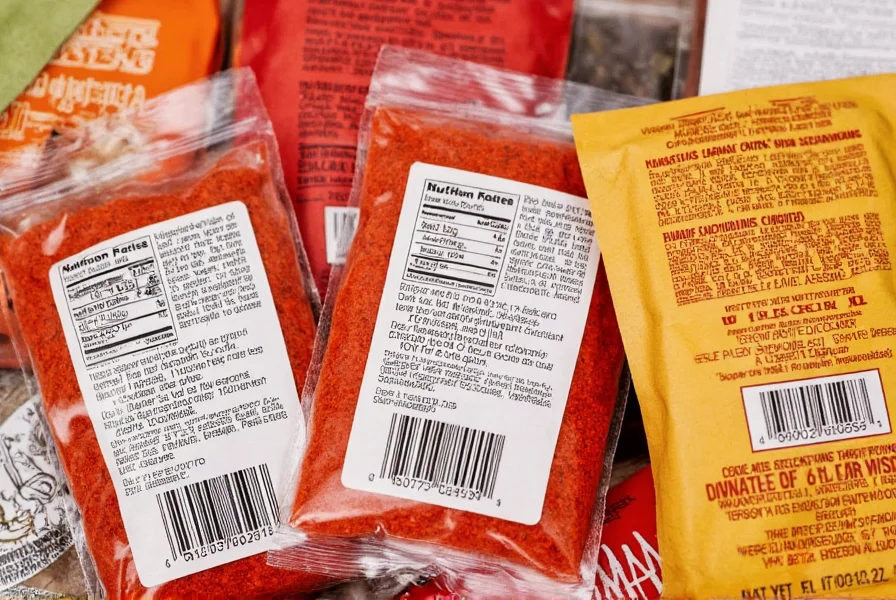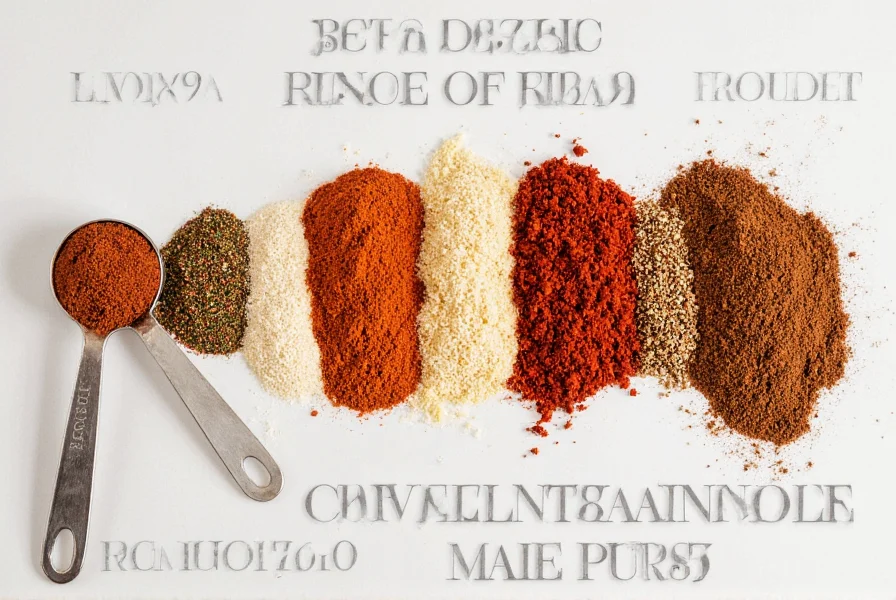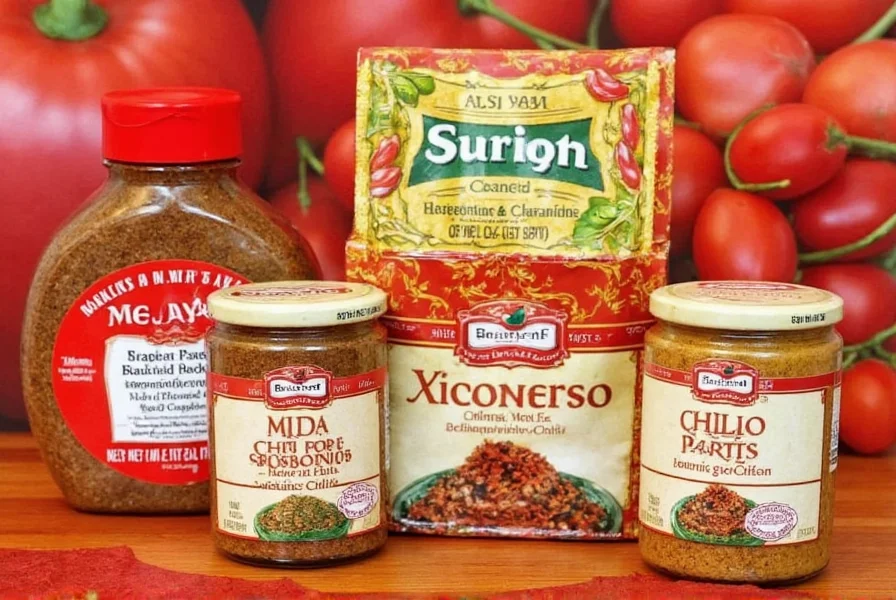Understanding what goes into commercial chili seasoning packets helps home cooks make informed decisions about flavor, nutrition, and convenience. These convenient spice blends have become pantry staples for quick weeknight meals, but knowing their composition and proper usage unlocks better culinary results. Whether you're a beginner cook or seasoned chef, optimizing your use of these packets can transform ordinary dishes into flavorful creations.
What's Inside Commercial Chili Seasoning Packets
Most store-bought chili seasoning packets follow a similar formula, though specific ingredients vary by brand. The core components typically include:
| Common Ingredients | Typical Percentage | Flavor Contribution |
|---|---|---|
| Chili powder | 40-50% | Base heat and earthy flavor |
| Ground cumin | 20-30% | Warm, nutty depth |
| Garlic powder | 10-15% | Savory umami notes |
| Onion powder | 8-12% | Sweetness and complexity |
| Paprika | 5-10% | Color and mild sweetness |
Many commercial blends also contain anti-caking agents like silicon dioxide, preservatives such as calcium silicate, and sometimes sugar or maltodextrin. Sodium content ranges from 300-600mg per serving, which cooks should consider when seasoning other ingredients that contain salt.

Optimal Usage Techniques for Better Flavor
Simply dumping a packet into your pot misses opportunities for flavor development. Professional chefs recommend these techniques for maximizing taste:
- Bloom the spices - Sauté the seasoning blend in oil for 1-2 minutes before adding liquids to intensify flavors
- Layer seasoning - Add half initially and the remainder near the end of cooking for brighter spice notes
- Balance acidity - A splash of vinegar or lime juice after cooking cuts through the blend's heaviness
- Adjust heat level - Add cayenne or chipotle powder if you prefer spicier results than the packet provides
When using chili seasoning packets for 1 pound of ground meat, most recipes call for 1 packet plus 1 cup of liquid (broth, tomato sauce, or water). For optimal texture, brown your meat thoroughly before adding the seasoning to prevent clumping.
Homemade vs. Commercial Chili Seasoning: A Practical Comparison
While convenient, store-bought packets differ significantly from homemade versions in several key areas:
| Comparison Factor | Commercial Packets | Homemade Blend |
|---|---|---|
| Flavor complexity | Muted, one-dimensional | Bright, layered notes |
| Sodium content | 300-600mg per serving | Adjustable to taste |
| Cost per batch | $0.75-$1.25 | $0.30-$0.50 |
| Customization | None | Complete control |
| Shelf life | 18-24 months | 6-12 months |
Creating your own chili seasoning blend takes just 5 minutes and lets you adjust heat levels, reduce sodium, and enhance specific flavor notes. A basic homemade version combines 2 tablespoons chili powder, 1 tablespoon cumin, 1½ teaspoons garlic powder, 1 teaspoon onion powder, ½ teaspoon paprika, and ¼ teaspoon oregano.

Creative Applications Beyond Traditional Chili
Chili seasoning packets offer versatility beyond the classic dish. Try these unexpected applications:
- Taco seasoning alternative - Use 2 tablespoons per pound of meat for quick tacos
- Roasted vegetable enhancer - Toss with potatoes or sweet potatoes before roasting
- Bean dip base - Mix with refried beans and cheese for instant party dip
- Marinade component - Combine with oil and lime juice for carne asada
- Popcorn seasoning - Sprinkle lightly over freshly popped corn
For recipe developers exploring how to use chili seasoning packets in creative ways, consider adding a teaspoon to tomato-based pasta sauces or mixing into burger patties for Southwestern flair. The blend's balanced spices work well in unexpected applications where you want subtle heat without overwhelming other flavors.
Smart Substitutions When Packets Aren't Available
Rather than making an extra grocery trip, use these substitutions when you need how to substitute chili seasoning packet solutions:
- Basic replacement - 2 tablespoons chili powder + 1 teaspoon cumin + ½ teaspoon garlic powder + ½ teaspoon onion powder
- For smokier flavor - Add ¼ teaspoon chipotle powder to the basic replacement
- Low-sodium option - Use fresh minced garlic and onion instead of powdered versions
- Quick taco seasoning - Omit oregano from the blend and increase cumin slightly
When substituting for how much meat does one chili seasoning packet season, remember that most packets season approximately 1-2 pounds of meat. Adjust quantities proportionally when using homemade blends.
Proper Storage for Maximum Freshness
To maintain flavor quality of both commercial packets and homemade blends:
- Store in airtight containers away from heat and light
- Use within 6 months for homemade blends (commercial packets last 18-24 months)
- Check for faded color or diminished aroma as signs of degradation
- Never store above the stove where heat accelerates flavor loss
For those exploring best practices for storing chili seasoning packets, consider dividing large commercial packages into smaller portions to minimize air exposure each time you use them. Glass jars with tight-sealing lids work better than plastic containers for preserving spice freshness.
How many tablespoons are in a standard chili seasoning packet?
Most commercial chili seasoning packets contain approximately 4 tablespoons (¼ cup) of seasoning blend, which is designed to flavor 1-2 pounds of meat in traditional chili recipes.
Can I use taco seasoning instead of chili seasoning?
Yes, but with adjustments. Taco seasoning typically contains more cumin and oregano with less chili powder. For substitution, use 1½ packets of taco seasoning plus 1 teaspoon additional chili powder per standard chili recipe.
Why does my chili taste bitter when using seasoning packets?
Bitterness often occurs when spices burn. To prevent this, always bloom the seasoning in oil for 1-2 minutes over medium heat before adding liquids, and avoid high-temperature cooking during this step.
How can I reduce the salt content in commercial chili seasoning packets?
Rinse canned beans thoroughly before adding to chili, use no-salt-added tomato products, and omit additional salt during cooking. You can also dilute the packet with an equal portion of homemade low-sodium blend.
Frequently Asked Questions
- How many tablespoons are in a standard chili seasoning packet?
Most commercial packets contain approximately 4 tablespoons (¼ cup) designed for 1-2 pounds of meat. - Can I use taco seasoning instead of chili seasoning?
Yes with adjustments. Use 1½ packets of taco seasoning plus 1 teaspoon additional chili powder per recipe. - Why does my chili taste bitter when using seasoning packets?
Bitterness occurs when spices burn. Bloom the seasoning in oil over medium heat for 1-2 minutes before adding liquids. - How can I reduce the salt content in commercial chili seasoning packets?
Rinse canned beans, use no-salt-added tomato products, and omit additional salt during cooking.











 浙公网安备
33010002000092号
浙公网安备
33010002000092号 浙B2-20120091-4
浙B2-20120091-4